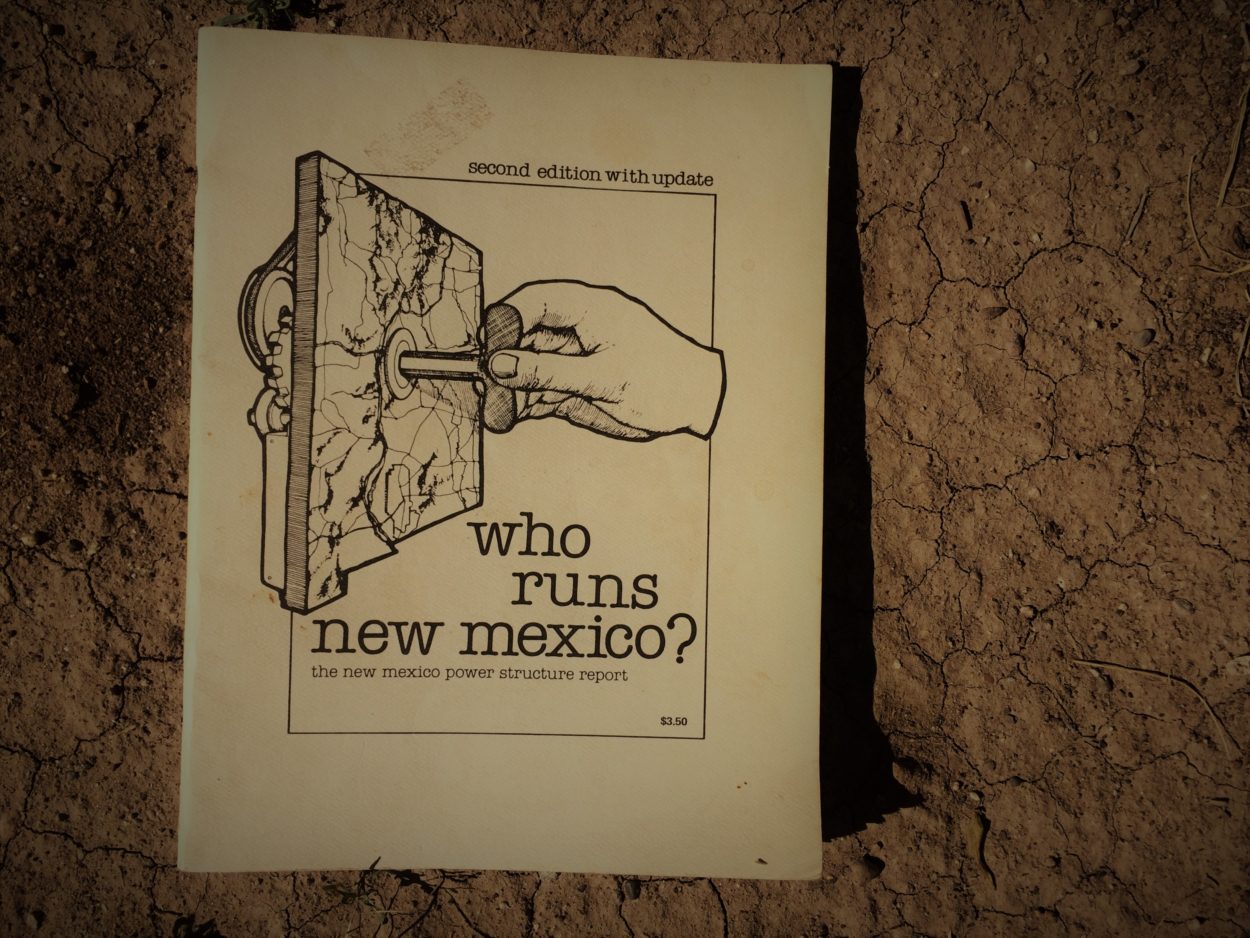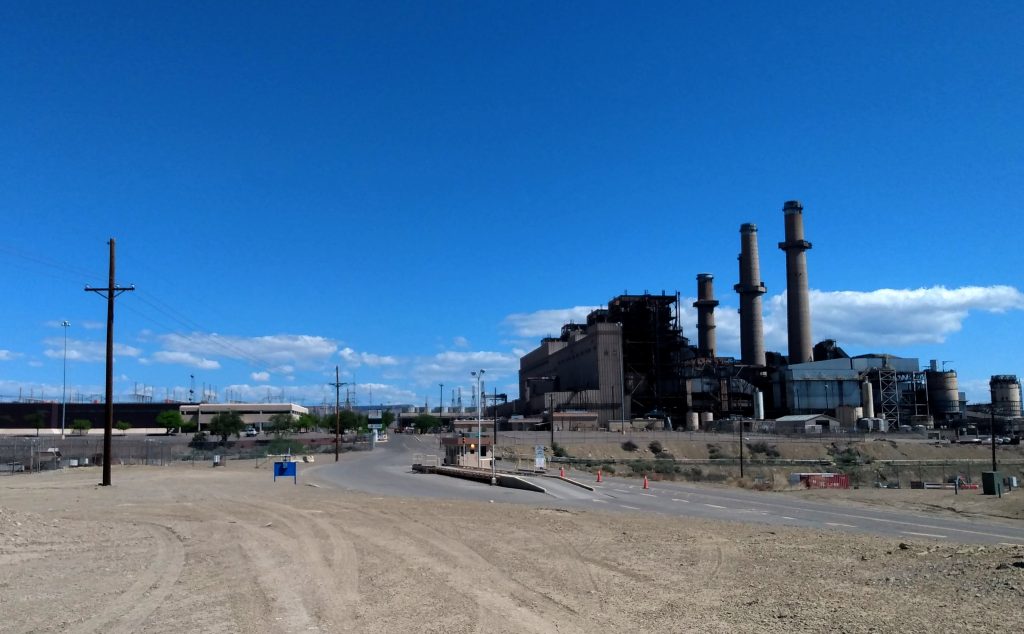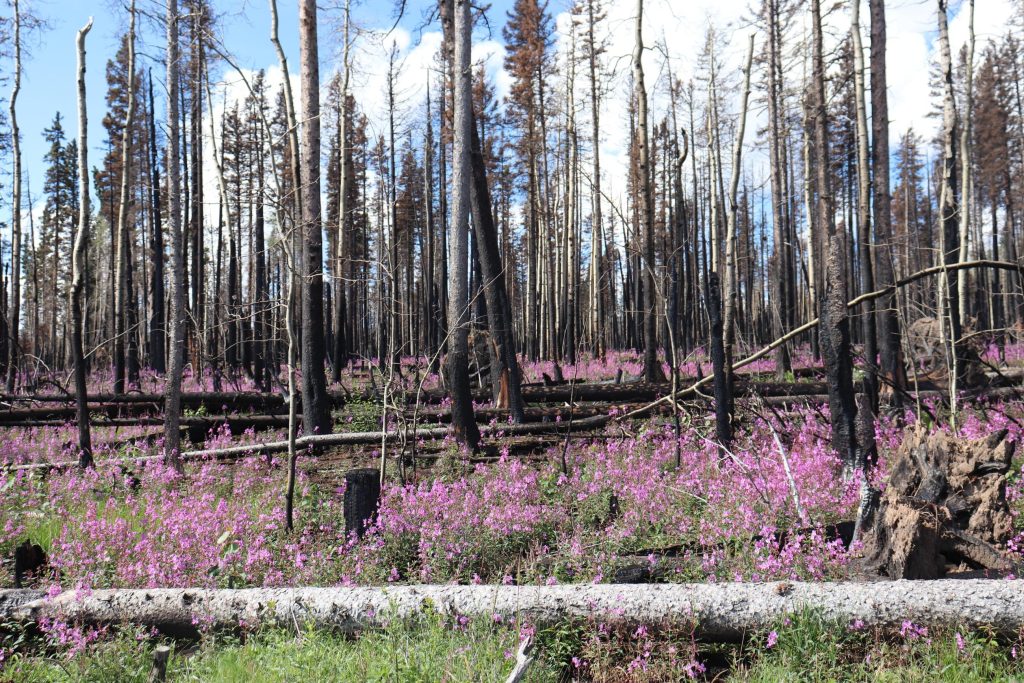Thanks to Gov. Susana Martinez’s vetoes of the higher education and legislative budgets, hostilities between the governor’s office and legislators over taxes and next year’s budget are playing out statewide, and daily in the headlines. Soon, the two parties will be facing off in the New Mexico Supreme Court over those two line-item budget vetoes.
On the surface, the battle is over the budget. It also raises deeper questions about power and control: Can one person and a handful of executive office staffers and advisers wield ultimate power over the 112 legislators elected from communities across the state?
But beneath the layers of campaigns, elections and public debates, there are also powerful people, companies and industries at work behind the scenes.
More than three decades ago, researchers tried to understand who controls New Mexico’s resources, communities, lands, contracts and finances. In 1981, the now-defunct nonprofit New Mexico People and Energy released Who Runs New Mexico? The New Mexico Power Structure Report. Sold for $3.50, the 50-page report included a social and economic profile of a state just a half century into statehood and facing another new influx of Anglo migrants.
Seers Rio Grande Weekly
The report was the outgrowth of a collective in the 1970s that operated a newspaper called the Seers Rio Grande Weekly.
“Back then, there was more of a sense of New Mexico being ‘discovered,’ for resource exploration and tourism and of New Mexico’s identity as being apart from other states, said Tom Barry, who came to New Mexico in the early 1970s and founded the statewide, investigative newspaper. There was also the sense that people needed to protect what belonged to the state. “As part of that commitment, we wanted to truly understand how we were being exploited.”
Barry, Deb Preusch and Beth Wood assigned people with expertise in different areas to look at particular elements of New Mexico. They wrote dozens of reports, compiled them into “Who Runs New Mexico?” and traveled across the state, organizing talks in English, Spanish and Navajo.

One of the motivating issues at the time was uranium mining, which in the 1950s, 60s and 70s had produced more than $3 billion in concentrate, sometimes called yellowcake. The mining had also sickened workers and used tens of thousands of acre feet of water each year. Meanwhile, the uranium was exported out of state, destined for plants in Illinois, Oklahoma, Tennessee and Kentucky—and even North Korea.
Some of the mining companies operating at that time would not be familiar to the general public, but are known to those familiar with the Superfund sites that have been left behind, including Kerr-McGee, United Nuclear (UNC) and UNC-Homestake.
While researching the state’s copper mines, Barry even interviewed Juan Chacón, a miner and union president in southwestern New Mexico, who was cast in the 1954 movie “Salt of the Earth.” That work was Barry’s first introduction to southwestern New Mexico, and today, he still lives in Silver City.
Looking back on Who Runs New Mexico? Barry said they tried to bring tactical thinking to their analysis, “as a way to get people to protect what’s theirs, whether it was the state or the Hispanic communities, or the Native American reservations.
Barry also worked at the Navajo Times and cofounded New Mexico People & Energy. Today, he directs the Center for International Policy’s TransBorder Project and most recently has been looking at the political tensions that arise from water scarcity in Mexico.
While a lot of the report remains prescient today, Barry had some criticism, too.
“In a critical sense, looking back on it, that colonization aspect may have been a little overdone in a sense of being too nationalist,” he said. “In some ways, the border is an artificial barrier, for instance we didn’t talk about copper mining in Mexico. I would really fault myself on that kind of analysis, that’s tied to a state border.”
What has changed—and what hasn’t
At the time of the report, New Mexico’s population was 1.241 million. The poverty rate was the second highest in the nation, behind Mississippi. Statewide, 15.5 percent of families—46,000 families—lived below the poverty level.
Today, the state’s population is about 2.085 million, and poverty remains a crushing problem. According to the 2015 Census, 20.4 percent of New Mexicans live in poverty. Like in the 1970s, New Mexico is second worst in the nation, behind only Mississippi.
Today, according to a report the Legislative Finance Council released in January, New Mexico’s unemployment rate is still higher than the national average, which indicates the state is “either struggling to recover from the Great Recession or is in a new normal of low growth.”
Government was the largest employer in the 1970s, and federal grants to the state contributed about one-quarter of total state revenues. New Mexico remains extremely dependant on the federal government for jobs, grants and aid to farmers and ranchers.
Like the rest of the nation, New Mexico has also seen a stark decline in unionized jobs. But even in the 1970s, the numbers were low.
In 1975, New Mexico ranked 42nd in the nation in terms of union representation. Only 14 percent of the workforce was unionized. By 2016, that number had declined to 8.2 percent of the workforce.
The dip is due in part from the loss of mining unions in southwestern New Mexico, a region once famous—or infamous, depending on your perspective—for its union activity.
The movie “Salt of the Earth” depicted a 15-month strike during the early 1950s in which women and children joined the picket line against Empire Zinc Company. Sponsored by the International Union of Mine, Mill and Smelter Workers, the movie was blacklisted. Congressmen called it out for being communist and the FBI investigated its financing.
Three years ago, workers at the Chino Mine, today owned by Freeport-McMoRan Copper & Gold, voted to decertify the union that was portrayed in the 1954 movie.
According to a 2014 story in the Albuquerque Journal, when miners voted to end Mine Mill Local 890, it was the last of the region’s unions:
At least 10 unions flourished at Grant County’s two copper mines in 1967 when [73-year old Terry] Humble started work as a mechanic at the Chino Mine.
One after another since 1991, members voted to decertify unions for machinists, carpenters, boilermakers and other trade groups, he said.
At the Tyrone Mine, a second Grant County copper mine owned by Freeport-McMoRan southwest of Silver City, all three unions were decertified in 1994.
Local 890 had a membership of 560 in 1996. Its successor union had a membership of 343 last month when it was decertified.
Meanwhile, the number of lobbyists working in New Mexico has grown. In 1980, there were 130 registered lobbyists. Today, there are 639 listed with the New Mexico Secretary of State. In 2014, there were more than 1,100.
New Mexico has seen gains over the decades.
In the late 1970s, the state had only 104 doctors per 100,000 people and 9.9 percent of homes lacked plumbing facilities. In 2014, the state had 235 active physicians per 100,000 people. The U.S. Census no longer collects data related to plumbing facilities, but in 2000, 3.1 percent of the state’s homes lacked plumbing.
And the status of women has improved.
Who Runs New Mexico? reported that 5 percent of state senators and 7 percent of state representatives were women, and at that time, New Mexico had never had a female governor or lieutenant governor. New Mexico women at the time earned 42 cents for every dollar earned by men with the same education.
Today, 33 of the state legislature’s 112 members are women. And in 2015, women in New Mexico earned 75 to 79 percent compared with men’s wages.
Industry power remains, people power has grown
One familiar name among the contributors to Who Runs New Mexico? is former Democratic state senator Dede Feldman, who represented Albuquerque’s North Valley from 1997 to 2012.
Feldman came to New Mexico in 1975 from Pennsylvania, where she’d worked as a teacher. Spotting a copy of Seers Rio Grande Weekly near the university, she rang up the editors and volunteered.
Her first story, she said, was about water contamination from Schwartzman’s Feedyard and Packing Company. The family had opened a market in downtown Albuquerque in the nineteenth century and expanded the business into a slaughterhouse and feedlot in the South Valley in the 1920s. By the 1970s, there were instances of nitrate-contaminated drinking water causing babies to have blue skin.
“I wrote the article, and wow! It was on the front page,” Feldman said today. “It was their way of roping me in.”
The paper folded in the late 1970s but was one of the longest-running underground newspapers in the country, she said. “It had a very radical orientation, in that the editorship rotated every two weeks, so we all did everything,” she said, recalling she earned $75 every two weeks. “I learned how to write, sell ads, deliver newspapers, take photos, write cutlines and interview people,” she said. “It was a great way to get to know New Mexico.”
The newspaper looked at economics through the lens of the state’s power structure, she explained. “It was a time of heavy uranium mining in New Mexico, and the WIPP site was just getting started and there was resistance to that,” Feldman said.
Since then, some things haven’t changed. Most notably, she said, the oil and gas and mining industries remain powerful, with close ties to elected officials. And, she said, state agencies still have a hard time regulating the large federal installations in New Mexico, such as WIPP, which had an accident three years ago; Los Alamos National Laboratory, which is behind in its cleanup of Area G, a 63-acre toxic and nuclear waste dump dating back to the 1950s; and Kirtland Air Force Base, which leaked millions of gallons of jet fuel into groundwater beneath Albuquerque.
“I think we’re able to hold the line better than in the past,” she said. “But I’m biased because I became an elected official and tried to do something about these things. And I found out how hard that was.”
One major change she’s seen is the infrastructure of activism, particularly when it comes to water.
In the 1970s, State Engineer Steve Reynolds, who served in that position from 1955 to 1990, and Republican U.S. Sen. Pete Domenici were like “small gods,” she said, who few people questioned.
Today, more people and organizations are interested in preserving New Mexico’s water. “That’s a great step,” she said. “It feels to me, far more of the public is interested and active in these issues.”
State finances, then and now
The report provides a perspective on some of New Mexico’s budget issues today. The budget is less robust, for example, while the Land Grant Permanent Fund has grown.
In fiscal year 1979-1980, New Mexico had a surplus of $139.7 million, whereas the Fiscal Year 2017 ending balance was about $100 million in the red, according to the Legislative Finance Committee’s 2017 Legislative Session fiscal overview.
In the late 1970s, the permanent fund had $1.4 billion. Today, it’s at $15 billion.
In 1978-79, the State Land Office collected $115 million from land rents and royalties. In fiscal year 2017 so far (through the end of April), the office has already collected $450 million.

In the late 1970s, less than 5 percent of the state’s General Fund came from corporate and financial industry; personal income tax accounted for 14 percent of the fund. And 39 percent of non-property taxes came from gross receipts taxes.
In Fiscal Year 2017, gross receipts tax brought in about a third of revenues to the general fund, followed by personal income tax and investment income.
Energy and minerals
In the late 1970s, New Mexico supplied 5 percent of total U.S. energy and ranked sixth in overall production and reserves of oil, gas, coal and uranium.
At that time, New Mexico was the fourth largest producer of natural gas and seventh largest producer of oil in the nation. More than 95 percent of the permanent fund came from oil and gas and the industry employed 20,000 workers.
In 1979, about 14 million tons of coal were mined in the state and New Mexico was the leading uranium producer, responsible for 47 percent of total U.S. production. New Mexico was also the third largest producer of copper.

More recently, in 2015, New Mexico ranked fifth in crude oil production in the nation, eighth in natural gas production and 10th in coal production. In 2015, New Mexico produced more than 1.9 million tons of coal.
There’s been an exponential increase in oil and gas drilling since the 1970s, with tens of thousands of new wells. According to the state’s 2015 energy plan, about 68,000 jobs, or 9 percent of all employment in New Mexico, are directly or indirectly related to the oil and gas industry.
The 1981 report’s authors didn’t just list out statistics. They also put them into historical perspective, showing how Anglo migration into New Mexico changed the state’s power structure.
In the 1800s, for instance, Texas ranchers drove Mexican farmers and ranchers off lands in the Pecos Valley, while Thomas Catron and other members of the Santa Fe Ring imposed new tax and legal systems that caused northern New Mexicans to lose their land grant holdings.
There was another shift in the 1920s, noted the report’s authors, when oil and gas was discovered, first in southeastern New Mexico and then in the San Juan Basin:
The quick rise to wealth by a number of NM producers placed them among the members of the older ranching-mercantile-legal upper class. But the oil and gas industry also introduced a new force in [the] New Mexico economy—the presence of outside companies that gained control of the major production.
It’s a lesson that still applies today, when a third of the state’s budget comes from oil and gas revenues. According to the New Mexico Oil and Gas Association, the top five producers in New Mexico in 2014 included ConocoPhillips, Devon Energy, Concho Resources, BP America and ExxonMobil.






















